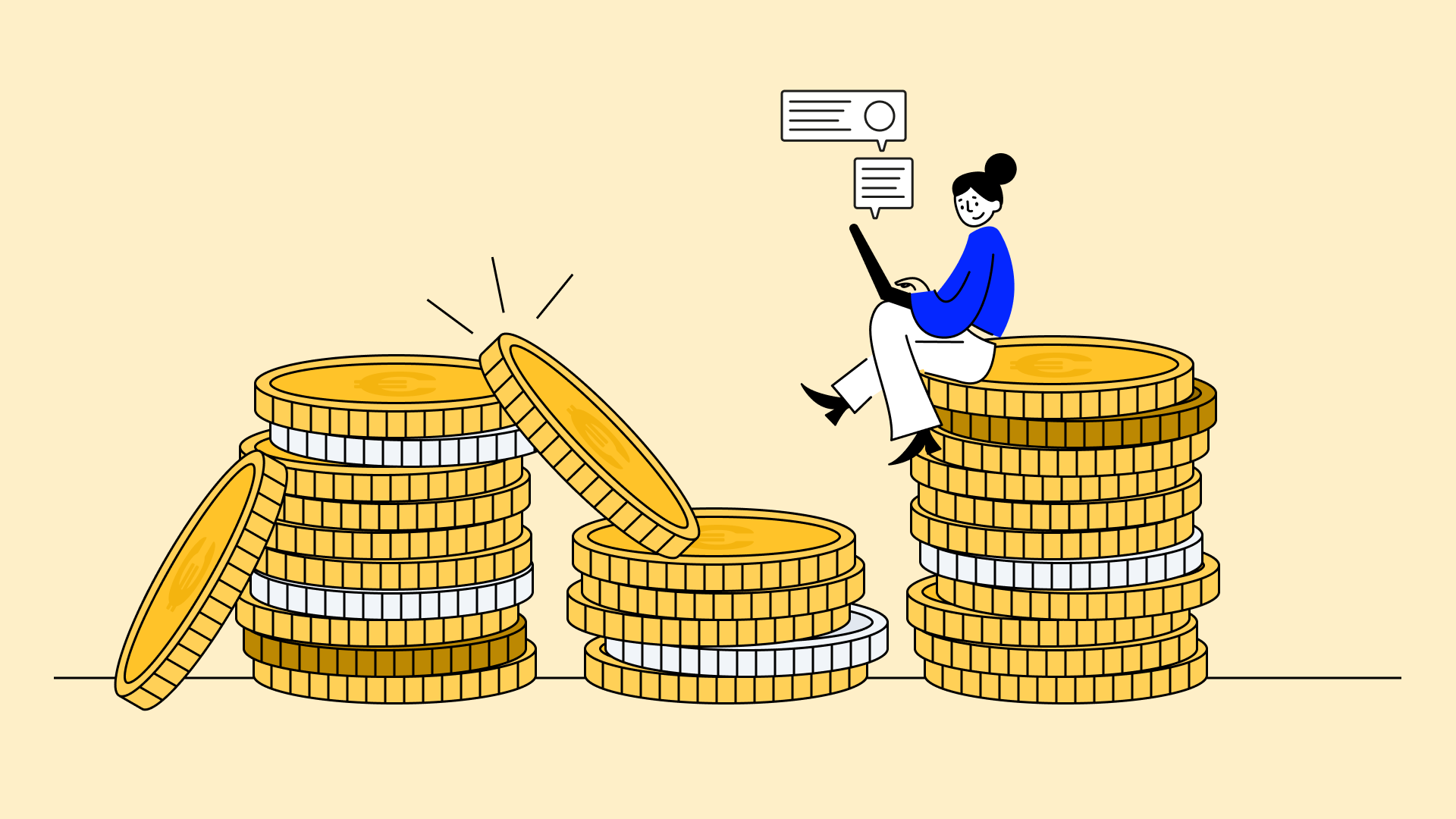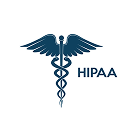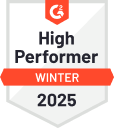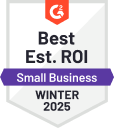20 Experts Share: How To Re-Accelerate Sales After a Market Downturn for SaaS in 2025?

The SaaS industry has been hit hard by the recent market downturn. According to ChartMogul, its growth rate and revenue have slowed significantly in the past year, with a decrease in growth rate from 33.1% in 2021 to 29.1% in 2022.
In this blog post, we will discuss how businesses can re-accelerate their sales in a turbulent market situation.
Why Should You Rethink Your Current Sales Strategy?
According to a recent survey by HubSpot, 85% of sales professionals believe the sales landscape is changing rapidly. What worked yesterday may not work tomorrow, and only those who adapt their sales strategy will win.
Accelerating sales processes can also help you engage healthier and more bountiful prospects and optimize the sales process.
Traditional Vs. Accelerated Sales Processes
What is the difference between traditional and accelerated sales processes?
The traditional sales process is linear and involves identifying, qualifying, and moving prospects through the sales funnel. The process is slow and time-consuming, so closing a deal can take weeks or even months.
On the other hand, the accelerated sales process is data-driven and uses technology to automate sales. It involves identifying the right prospects, engaging them with personalized messaging, and converting them into customers through well-defined and tailored sales.
This sales process is faster and more efficient than the traditional one, and it can help you close deals in a matter of days or even hours.
The Main Benefits Of Sales Acceleration + Action Steps
According to a report by McKinsey, businesses that focus on accelerating sales can increase their revenue growth by up to 30%. The main benefits include shortening the sales cycle, and selling more efficiently.
For example, by automating much of the work that a sales team needs to generate and maintain a pipeline, you can free up your team from tedious research and let them get straight to selling.
Sales acceleration also helps you appropriately score and allocate your leads, which is one of the best ways to improve sales velocity and make your team even quicker on the uptake.
What are the specific steps you can take to accelerate sales?
First, you’ll want to focus on effective team management, implement software that helps you speed up work and track performance, and use AI for automation. You can even use tools like visualization platforms.
By leveraging the right sales acceleration tool, you ensure a better customer buying process and faster selling for salespeople, making the experience better for both parties.
This 5-Steps Sales Acceleration Formula Will Kick-off Your Revenue
The sales acceleration formula is a scalable and predictable approach to growing revenue and building a winning sales team. It uses data, technology, and inbound selling to quickly move leads through the sales cycle.
The formula includes five key elements:
- The hiring formula: hire the same successful salesperson every time,
- The training formula: train every salesperson in the same manner,
- The management formula: hold salespeople accountable to the same process,
- The demand generation formula: provide salespeople with the same quality and quantity of leads every month,
- Technology: leverage tech to enable better customer buying and faster selling for salespeople.
Following this simple formula can build a remarkable team and accelerate sales.
From Zero to Hero: 20 Experts On Sales Acceleration Strategies For 2025
1. CloudTalk.io, Mark Sandecki, an Inbound Senior SDR
Over the years in sales, I was in many situations where our team needed to take steps toward improving our sales processes. There are 5 things I’d advise struggling businesses:
- Be a consultant first: Before pitching your product, you should first understand the problems your prospects are facing. You can tailor your pitch to their specific needs and demonstrate how your product can solve their problems.
- Emphasize how you can improve prospects’ daily workflow: When pitching your product, it’s important to highlight the benefits that your candidates will receive. In particular, you should focus on how your product can make their processes more efficient and their lives easier.
- Highlight better customer experience: Customers are the center of your prospects’ business, so offering stellar CX is a key benefit to promote.
- Build trust to encourage cooperation: Building trust with your prospects is essential for closing deals. You promote your partnership by demonstrating that you understand their needs and can provide solutions.
- Be persistent and relevant: Don’t get discouraged by the initial lack of response. Instead, ensure your message is appropriate and you understand your client’s needs. If you hear a “No,” don’t accept it without an explanation. By understanding your client’s needs, you can tailor your pitch and increase your chances of success.
2. Slido.com, Tomas Dzurenda, VP of sales
Due to the nature of our business, we benefit from most of our sales being inbound. We possess specific data points we can utilize when reaching out to leads, ensuring that our emails or calls are not perceived as impersonal and generic, as is sometimes the case.
In our revised approach to assisted sales, we engage with users and prospects at the account level and extend our efforts to the domain level. This entails assigning a dedicated salesperson to a currently “hot” domain, who will establish a long-term relationship with both free users and paid account holders associated with that domain.
All communications, including support tickets, campaign responses, and package purchases, are directed to this designated point of contact.
Our overarching objective is to centralize licensing arrangements at a global level, ensuring that licenses are acquired not at the individual or local level but ideally from a centralized IT/digital budget.
3. Nicereply.com, Lenka Brozmanová, CMO of Nicereply
- Hyper-Personalized Customer Journeys:
In the digital age, SaaS companies have access to vast amounts of information on user behavior and preferences. This data can be harnessed to create hyper-personalized customer journeys and ensure each touchpoint is tailored to the customer’s needs.
Tailoring products and services to the user’s needs improves the overall customer experience and conversion rates. However, you need to emphasize this approach to your team to make it work and increase sales and customer loyalty. - Continuous Feedback Loops with Customers:
SaaS products are always changing and evolving. That’s why establishing constant feedback loops with customers is vital. To stay in line with customer needs and expectations, SaaS businesses should actively seek feedback and act on it promptly.
Taking a proactive approach enhances the product and shows customers that their voice is valued, fostering trust and building long-term relationships. Therefore, having an ear to the ground and listening out for actionable insights should be a top priority for customer experience professionals.
Integrating these strategies into your sales and marketing efforts, you’ll be poised to re-accelerate sales and ensure a thriving SaaS business in 2025 and beyond.
4. Kickresume.com, Peter Duris, CEO of Kickresume
- Reconnect with your untapped potential:
Your existing users are a goldmine of insights — even those that aren’t currently active. Since they already know your brand and have used your tool, there’s a big potential for them to return.
The coming year will be all about reigniting your relationship with those former users who have fallen off the radar and those who are still on the fence about going premium. Reach out to them personally.
Share your latest features with them through newsletters and emphasize how these new additions can enhance their experience. Encourage them to give your tool another shot. And finally, make magic happen by asking for their input.
Create polls to know their thoughts on the improvements they’d like to see. For example, last year, we overhauled our tool based on feedback from these very users, making their job search even smarter with AI.
This approach should work also in 2025 because it keeps your product aligned with what users truly want and what the market demands.
- Join forces with partners:
Don’t face the upcoming year alone. Find like-minded partners who can help you reach a broader audience to broaden your reach and expose your product to new potential customers.
For example, we teamed up with ISIC, a student association, to offer free premium access to students for a few months. This not only supports students in finding their first job but also turns them into loyal users later on when they need to find a new job.
We also have affiliate partnerships with platforms like Skillshare and Coursera, opening doors to potential customers. To make these partnerships happen, you can try a platform called Impact.
5. Planable.io, Vlad Calus, Co-founder of Planable
To re-accelerate SaaS sales in 2025, focus on upselling lower-tier customers by tailoring messages highlighting missing features or services from their current plan. This technique enhances customer satisfaction and revenue growth by providing a more personalized and value-driven approach.
To foster stronger, enduring customer relationships and loyalty, consider offering special discounts for those willing to commit to a longer-term contract by year-end, emphasizing the partnership and value addition.
Meanwhile, reignite interest by revisiting and addressing the concerns of leads lost in the past year, utilizing a multi-channel approach to reconnect and update them on what’s new.
6. Whatagraph.com, Linas Zemaitis, VP of Marketing
- Understand your customers:
It will sound cliche, but you should focus on understanding your prospects’ main pain points and position your platform as a solution. In other words, ensure that your product delivers real value and that you communicate that value well with messaging that resonates with your ideal customers.
During a downturn, many “nice to have” tools get canceled as the budgets are slashed. You must ensure that your customers perceive your solution as essential for solving real problems.
- Stick to what works:
Analyze what works well for you and focus on scaling it up rather than chasing unproven, shiny new things. If you are doing search engine marketing, it could mean improving rankings on proven high-intent terms rather than spending a lot of effort on unproven broad keywords. Closing leads with low intent can be even harder when times are tough, so finding the right signals is even more important.
7. Setupad.com, Linda Kolontaja, Head of Sales
- Tailored Customer Engagement and Leveraging Referrals:
A pivotal strategy to accelerate SaaS sales is offering highly individualized service to each client. This requires in-depth client research, understanding their unique challenges, and demonstrating how your SaaS solution addresses these needs.
While referrals are an important aspect of growth, they shoudln’t be the sole focus of this personalized approach. Exceptional service to each client can naturally lead to referrals, as satisfied customers will likely recommend your services. Still, the primary goal remains to deliver unparalleled value and satisfaction to each client.
- Continuous Improvement and Collaborative Growth:
Never becoming complacent and looking for ways to grow and improve is essential. Viewing clients as collaborators rather than just customers fosters a partnership approach.
By aligning with your client’s objectives and working together towards shared goals, you create a beneficial relationship for both parties. This transforms client interactions from simple transactions to strategic alliances.
8. Close.com, Stefan Simonović, Senior Marketing Manager
- Personalized Customer Journey Mapping:
In 2025, personalization remains paramount in the SaaS industry. Tailor your customer’s journey by utilizing data-driven insights and segmentation to provide more targeted and relevant experiences.
Map out the entire customer journey, from the initial touchpoint to post-sale engagement, and customize communication and product offerings to meet their specific needs.
- Advanced Email Marketing Automation:
In 2025, capitalize on advanced email marketing automation tools that employ AI and machine learning to optimize your email campaigns.
Implement predictive analytics to segment your email lists effectively, personalize content, and schedule emails at reasonable times for each recipient.
Leverage automation to nurture leads, re-engage dormant customers, and drive upsells through targeted email sequences.
9. Brosix.com, Stefan Chekanov, CEO of Brosix
- Mobile-friendliness:
Nowadays, almost everyone uses a smartphone or tablet daily. So, your website content needs to be adapted for smart devices.
Besides, Google prioritizes mobile-friendly websites in SERPs; thus, increasing your online presence can positively affect your sales.
Also, it’s a good idea to develop a mobile app for your SaaS product—if applicable to your business as a step further to convert mobile users to paying customers.
- User-generated content (USG):
Get your users talking about your company. Encourage your current customers to give feedback on your website or a review site. Think about offering them different discounts or incentives in return.
Every positive testimony you get serves as a vote of confidence for your brand. The more, the better. Following this strategy in 2025, you can attract new clients, retain existing ones, and ultimately boost sales.
10. Keyhole. Co, Kristina Jakeman, Customer Success Manager
- First impressions matter:
Remember the old-age adage, “You never get a second chance to make a first impression.” There are various reasons why potential customers land on your product page, but the one constant is that they’re all looking for ROI.
Demonstrate your product’s value and shape expectations directly on your homepage. In your trial experience, ensure your onboarding process is embedded in a user’s workflow, leading them to your purchasing “a-ha” moment.
Most likely, your platform won’t be the only one that a prospect trials, so understanding ways to demonstrate value within the first few product interactions will lead to increased conversion rates.
- Don’t underestimate your CS reps:
With more companies creating and implementing AI help bots/solutions, genuine human interactions will become more appreciated.
Don’t underestimate the power of a knowledgeable Customer Success rep – when a prospect feels heard and their goals understood.
This translates to a positive sales experience. In an increasingly automated world, having a CS team to provide tailored product demos, assist in common snag points, and encourage product adoption leads to good word-of-mouth and referrals.
11. Surfe.com, Jack Bowerman, Communication Manager
- Identify Productivity Bottlenecks:
Salespeople should sell, that much is clear. And yet that’s often one of the rarer activities in their workdays. An average sales rep might spend between 75% and 20% actually talking to clients.
If you want to succeed in 2025, you’ll need to dig into the data and discover how much time your employees get to actually drive revenue, and how much they spend on supplementary tasks like researching, qualifying, and scoring leads. - Automate and Eliminate Time-Consuming Tasks:
In 2025, every company should be automating at least some of its processes. And the best place to start is with a CRM. First, take a look at removing some of the busy work from reporting, forecasting, and scoring leads.
Outreach is next, and a CRM can help too. Assuming you primarily look for prospects on LinkedIn, we recommend you download a browser extension that’ll allow you to add companies and contacts to your CRM directly from LinkedIn. - Personalize Your Messaging:
You can also enhance your outreach on LinkedIn by using message templates. This will save you hours each week by allowing you to send personalized messages at the click of a button. You’ll then also be able to view which of your templates has the highest response rate so that you can figure out what type of messaging is working with your prospects.
12. SEranking.com, Vadim Biletsky, Sales Manager
- Research your competitors
Your first task to re-accelerate sales in 2025 is to analyze your competitors thoroughly. Use SEO tools to gauge which pages of their website bring the most traffic and analyze why they do so you can repeat their success.
Focus on their on-page optimization, page content, user experience, backlink profiles, and other crucial elements that could help those pages rank high in the SERPs.
- Reassess your website content on-page optimization
The fastest way to re-accelerate SaaS sales is to use the resources you already have to your advantage. Do a detailed analysis of your website SEO and find the pages that rank in the top 20.
These might need only a slight push to make it to the top 10 — optimize the content and title tags, improve your internal linking, and you might receive more traffic to them. SEO is the long-term solution for accelerating SaaS sales. You can get more conversions and leads when you can rank at the top of the SERP and receive relevant traffic. But waiting for organic traffic might take months.
13. G2.com, Chris Perrine, Vice President & Managing Director
- External Tip (working with your buyers):
There are always accounts we hoped to close in the year, which, unfortunately, we didn’t complete. I like to list out these accounts, then prioritize them, and come up with a hit list of accounts I want to ensure I close in the coming year.
But a hit list is only the first step – what I do next is work backward to understand what I must do to ensure they close. I start with them onboarding with us and then go through each step in reverse order to know what I need to do to get that. It’s counter-intuitive as instead of progressing forward, I’m progressing backward, but it helps me understand what I need to do to get to that step.
It forces me to think differently, which allows my account planning and helps me know what actions I need to take to close each account successfully.
It’s also helpful in understanding if it’s still the right account to target – sometimes, working backward, I realize that account might not be the best use of my time. - Internal Tip (working with yourself to become more efficient):
I always like to reflect on the year and understand the areas where I felt I was either not as efficient as I could be or areas that held me up.
I’m often looking for those smaller activities, which I do frequently, but I never seem to have the time to improve as I’m too busy. The end-of-year holidays are a great time to “fix” these areas to help me do my job better.
A great example is organizing documents, website links, collateral, etc. – the content I’m sharing with buyers or internally.
It can get unorganized quickly, and I use this content daily, so in the aggregate, I’m wasting a lot of time by not being able to access and share this information easily. This inefficiency means I might spend an extra 30 seconds on each activity.
It adds up quickly; improving this can be a huge efficiency win. I now do this every year – I get organized, go through all of my content, set it up better, get rid of old content, understand what I frequently use, and set it up so I can use and share it more efficiently.
Spending some time on this can help me focus and improve my productivity over the year.
14. UXtweak.com, Martin Koncar, Enterprise Sales Specialist
- Focus on the client and be patient:
After many different crises and layoff periods, companies are starting fairly slowly. Most of them are rather cautious when discussing new business cases. Given the unstable situation of the market, it´s understandable.
Because of this, it will be more and more crucial to stay calm and listen to the exact needs of a particular client. Allowing them to take time while making a decision can be greatly appreciated. As they say: “slow but sure wins the race”. - Leverage data and AI:
The hype around AI tools is slowly stabilizing, which highlights only the approved and reliable ones. There are (and will be) many that can be implemented in different sales strategies. Such tools can automate some parts of our processes.
This should increase the effectiveness of the whole team and allow us to focus on the “whales” in our pipelines.
15. Breadnbeyond.com, Andre Oentoro, CEO of Breadnbeyond
- Master the art of timing and creating urgency:
Deals only close when value and urgency are clear. Only then will customers start mobilizing resources. You need to make the problem a burning issue, which must be solved urgently. Highlight their situation and what happens if they keep the status quo.
This way, you propel customers toward recognizing the immediate need for your solution. The key here is to bridge the gap to a far better situation than the current state. - Focus on customer retention and offer flexible pricing models:
Focusing on retaining existing customers can be an economically savvy strategy. As a customer-centric approach, this strategy fosters loyalty by providing continuous value delivery, proactive support, and ongoing improvement.
Additionally, SaaS providers may consider offering flexible pricing models to align with diverse client needs and further enhance the appeal of their services. This dual approach positions SaaS companies for sustained sales by maintaining customer relationships and adapting to market dynamics.
16. Flipsnack.com, Andreea Ile, Marketing Specialist
In 2025, strongly emphasizing refining user experience using digital documents can significantly amplify SaaS sales.
For example, focus on creating an intuitive and visually appealing digital catalog that allows users to easily navigate through, discover relevant products or services, and make informed decisions.
Add interactive elements such as product demos, 360-degree views, and augmented reality features to enhance engagement. Additionally, ensure seamless integration with various devices and platforms, accommodating the diverse preferences of your user base.
By providing a user-friendly and immersive experience, you capture potential customers’ attention and increase the likelihood of conversion. A well-designed digital catalog reflects positively on your SaaS brand, fostering trust and satisfaction among users.
Moreover, as the digital landscape evolves, staying ahead in terms of user experience positions your SaaS product as a cutting-edge solution, attracting new customers and retaining existing ones.
17. Cartoonize.net, Peter Babiy, Creative director
Your users are the heartbeat of your SaaS empire. Dive deep into customer feedback, unravel their pain points, and roll out updates that feel tailor-made. It’s not just about fixing bugs; it’s about enhancing user experience.
Consider creating a customer advisory board to foster direct communication and gather insights. By aligning your product with their evolving needs, you’re not just selling software but delivering solutions.
Use AI to examine usage trends and suggest features that fit their processes. Maintaining existing customers and drawing in new ones benefit greatly from a personalized touch. Content customers promote the brand; word-of-mouth marketing is still a powerful sales tool.
18. simpleshow.com, Tim Moss, Content Marketing Manager
- “Show, Don’t Tell” with educational videos:
Create informative and educational video content that demonstrates the value of your SaaS product and how it addresses specific pain points in the current market landscape.
Develop tutorial videos, product demonstrations, and tips that provide practical insights into how your SaaS solution can streamline processes, reduce costs, or increase productivity. Consider creating a series that gradually introduces the features and benefits of your product. - Establish thought leadership through webinars:
Position your company as an industry thought leader by hosting a series of webinars that address current challenges and trends in your target market. Use these webinars to showcase your expertise, provide valuable insights, and position your SaaS solution as a key enabler for overcoming industry-specific challenges.
Host webinars with subject matter experts from your team or industry influencers. Cover topics relevant to current market conditions, provide strategic advice and actionable insights and encourage participant interaction through Q&A sessions and polls.
19. Cherryservers.com, Kadi Arula, SEO Manager
Using tools that analyze customer behavior and feedback could help target discounted trials and messages precisely to those most receptive.
AI can help SaaS companies leverage AI/ML capabilities to hyper-personalize offers and marketing to create an extra-focused effort to maximize the already slim marketing budgets, even more so now when stricter regulations drive SaaS businesses to work on practices around sensitive customer info.
This will play a significant part in 2025 SaaS industry strengths while directly addressing straitened budgets.
Using AI in personalization minimizes resources while maximizing sales, and cost-saving addresses priority for buyers during a downturn and works around stricter rules on data privacy. Both leverage trends like AI expansion, workflow optimization, and metrics-driven selling.
20. Quoleady.com, Iryna Kutnyak, Director of Operations
- Implement a Product-Led Content (PLC) Strategy:
The key to successful content marketing, especially for SaaS, is to create content directly tied to your product. This means genuinely addressing your target audience’s problems and showing how your product can solve them.
This approach helps educate potential clients, build brand confidence, and generate interest in your product. Examples of PLC include case studies, how-to blog articles, and user guides.
Focusing on product-led content can support user acquisition, enhance customer retention, and differentiate your business from competitors. - Collaborate with Complementary SaaS Companies:
Collaboration with SaaS companies that operate in the same market but are not direct competitors can be highly beneficial. You can bring additional value to both audiences by partnering on common content or projects.
This collaboration could involve co-authoring content, hosting joint webinars, or developing complementary tool integrations. Such partnerships allow each company to leverage the other’s audience, expanding its reach and credibility.
This strategy diversifies the content and fosters community engagement, increasing visibility and accelerating sales for both parties.
Wrapping Up
In conclusion, the recent market downturn has hit the SaaS industry hard. However, you can re-accelerate your sales by rethinking the current sales strategy and focusing on accelerating sales.
By automating much of the work that a sales team needs to generate and maintain a pipeline, you can free them from tedious research and let them get straight to selling.
Sales acceleration tools can also help you appropriately score and allocate your leads, one of the best ways to improve sales velocity and make your team even quicker on the uptake.
We hope our blog post and all the experts’ advice helped you in your sales journey.
Script Your Success and Land More Deals
What did you find in this article?
What is sales acceleration?
Sales acceleration refers to using techniques, tools, and strategies to speed up the sales process, aiming to increase revenue more quickly. It encompasses a variety of activities and technologies that help sales teams collaborate and move prospects through the sales pipeline faster, such as data and analytics, technology, sales enablement, and many more.
What is the sales acceleration formula?
The Sales Velocity Formula, a.k.a. the Sales Acceleration Formula, is a way to measure the effectiveness of a sales process. It calculates how quickly a business makes money by looking at four key factors: Number of Opportunities, Average Deal Value, Win Rate, and Length of Sales Cycle.
How do you measure sales deal acceleration?
Measuring sales deal acceleration involves assessing how quickly deals move through the sales pipeline compared to a previous period or a standard benchmark. The main objective is to identify how changes in the sales process or strategy impact the time it takes to close deals.
What does artificial intelligence power sales acceleration technologies?
Sales acceleration technologies powered by artificial intelligence (AI) are designed to automate and enhance various aspects of the sales process, helping sales teams to work more efficiently and close deals faster.
These technologies can take many forms, from intelligent automation to predictive analytics. Here are some examples: Predictive Analytics, Speech Analytics, CRM systems, Lead Scoring and Prioritization, and many more.























